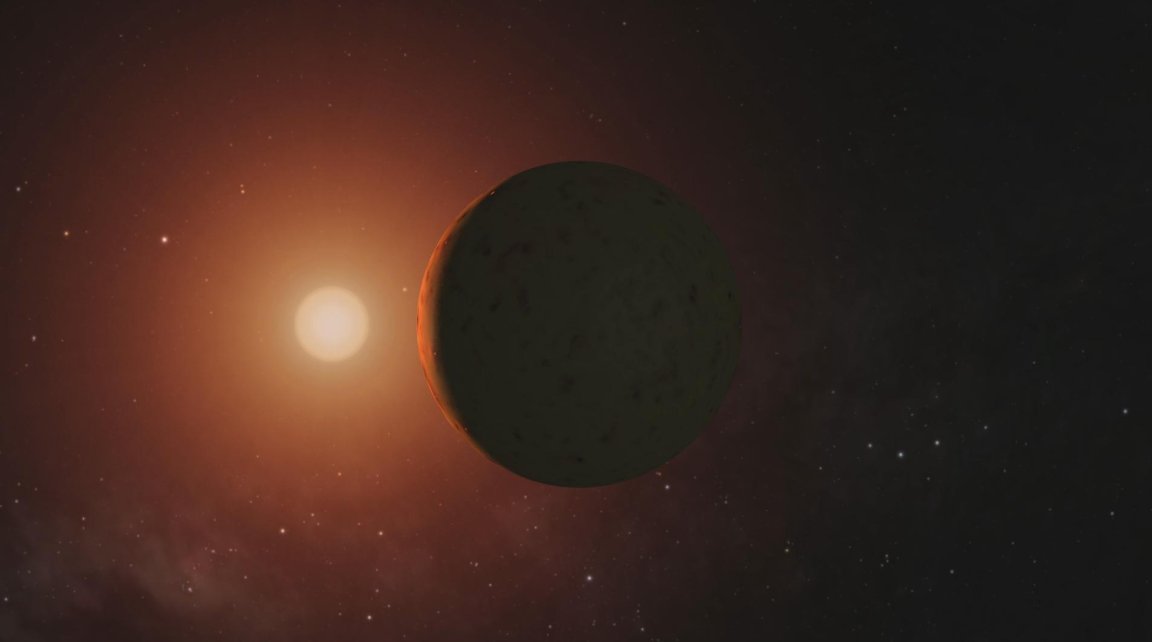
Habitable TRAPPIST 1 Planets
Last year, NASA astronomers announced the discovery of a solar system with seven Earth-like planets. The TRAPPIST-1 system marked not only the highest number of Earth-like planets ever found around a star, but also the highest number in the “habitable zone,” a region where temperatures aren’t so extreme as to extinguish the planets’ chances of supporting life.
Of the three potentially habitable TRAPPIST 1 planets, scientists now have new evidence that two could support life. Their research has been published in Astronomy & Astrophysics.

For their study, the team, which was led by Amy Barr, a planetary geophysicist at the Planetary Science Institute, first produced compositional models of the seven TRAPPIST-1 planets and their interiors. Using those models, they determined that six of the worlds likely bear either liquid water or ice, with one of the planets potentially home to a global ocean.
The next step was to plot each planet’s orbit in order to estimate its surface temperature. The planets in the Trappist-1 system have unusual, egg-shaped orbits, which cause them to stretch and squeeze in a way that can create heat in their interiors.
This phenomenon, known as tidal heating, not only warms up a planet, it can also promote chemistry and flow in its mantle, which produces conditions conducive to life as we’ve observed on Earth.
The researchers determined that planets b, c, d, and e all experience tidal heating. However, d and e experience much less and are the two most likely habitable TRAPPIST 1 planets.
Barr told The Guardian that d and e sit in a “kind of temperate region” with “very reasonable surface temperatures.” The team believes planet d has a temperature between around 15 degrees Celsius (59 degrees Fahrenheit) and just above the melting point of ice. Planet e would be colder, according to Barr, roughly akin to the temperatures found at Earth’s Antarctic region.
The Search Continues
At present, mathematical models are our best method of learning about the conditions of the various planets in the TRAPPIST-1 system. However, they leave some major gaps in our knowledge, like the question of whether any of the planets possess a significant atmosphere.
Thankfully, various projects are underway that will allow us to observe exoplanets, include the potentially habitable TRAPPIST 1 planets, in more detail.
One of those is the James Webb Space Telescope (JWST). The highly anticipated telescope is scheduled to launch in early 2019, and once it’s up and running, exoplanets will be among the first bodies it’s used to study.

Besides the JWST, a number of Earth-based observatories are on track to be completed the near future, and they’ll also contribute to exoplanet research. Both the Giant Magellan Telescope (GMT) and the Extremely Large Telescope, set for completion in 2025 and 2021, respectively, could potentially tell us a great deal about whether or not these planets are habitable.
Our study of exoplanets is still in its earliest stages — we only just confirmed they existed in 1992. Since then, we’ve confirmed 3,726 planets across 2,792 systems, including around 20 that could potentially be habitable. As we develop better tools to observe these worlds, we’ll be able to make more informed assumptions about their conditions.